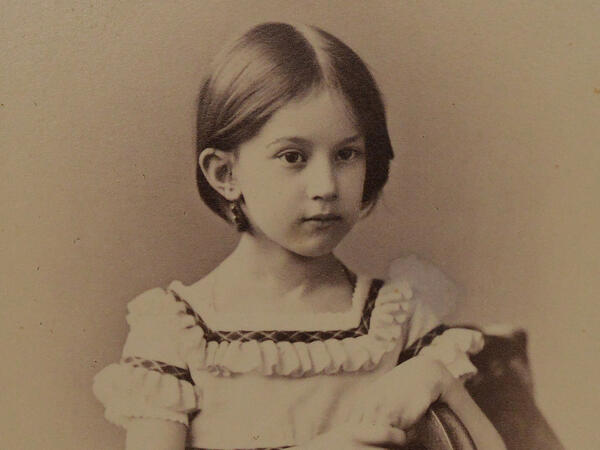The picture shows the daughter of the scientist and geographer Pyotr Semyonov -Tyan-Shansky, Olga. She was born in 1863 in St. Petersburg, but spent most of her life in the estate in the village of Gremyachka, which is in the Ryazan region. There, under her father’s guidance, Olga acquired her first knowledge of botany and determined her future scientific interests. She spent the winter months in St. Petersburg: she studied at the Drawing School of the Society for the Encouragement of Arts.
Olga Semyonova became a famous ethnographer. For many years she studied life of the peasants of Dankov and Ranenburg districts: she recorded how their rituals were held, collected folklore, and antiquities. These ethnographic observations later formed the basis of her book ‘Life of 'Ivan': sketches of the life of the peasants of one of the Black Earth provinces’, which was published after her death in 1914 in St. Petersburg.
Folk songs collected by Olga, descriptions of the celebration of Yegor’s Day, Ascension, Trinity and Mermaid week, folk beliefs about death and soul were published in the journal ‘Alive Antiquity’. Her first independently published work in the field of ethnography was a collection of songs from Ryazan Province, published in 1886, for which she received a silver medal from the Russian Geographical Society.
Semyonova’s other significant work was written in co-authorship with her brother Veniamin, editor of the 11-volume series ‘Russia. A complete geographical description of our Fatherland.’ This is an ethnographic survey of the Central Black Earth Region of Russia, and was included in the second volume of this series (‘Central Russian Black Earth Region’).
From 1902 to 1904 on behalf of the Russian Museum, she gathered a collection of ancient stitchwork, made by the peasants of Dankov and Ranenburg districts. This is the so-called ‘Muraevensky embroidery, ’ which is currently housed in the Russian Museum of Ethnography. Besides, Olga Semyonova was an artist and painted landscapes. Today her works are stored in the Ryazan Museum of Art and the Ryazan Historical and Architectural Museum-Reserve. She died in 1906.
Olga Semyonova became a famous ethnographer. For many years she studied life of the peasants of Dankov and Ranenburg districts: she recorded how their rituals were held, collected folklore, and antiquities. These ethnographic observations later formed the basis of her book ‘Life of 'Ivan': sketches of the life of the peasants of one of the Black Earth provinces’, which was published after her death in 1914 in St. Petersburg.
Folk songs collected by Olga, descriptions of the celebration of Yegor’s Day, Ascension, Trinity and Mermaid week, folk beliefs about death and soul were published in the journal ‘Alive Antiquity’. Her first independently published work in the field of ethnography was a collection of songs from Ryazan Province, published in 1886, for which she received a silver medal from the Russian Geographical Society.
Semyonova’s other significant work was written in co-authorship with her brother Veniamin, editor of the 11-volume series ‘Russia. A complete geographical description of our Fatherland.’ This is an ethnographic survey of the Central Black Earth Region of Russia, and was included in the second volume of this series (‘Central Russian Black Earth Region’).
From 1902 to 1904 on behalf of the Russian Museum, she gathered a collection of ancient stitchwork, made by the peasants of Dankov and Ranenburg districts. This is the so-called ‘Muraevensky embroidery, ’ which is currently housed in the Russian Museum of Ethnography. Besides, Olga Semyonova was an artist and painted landscapes. Today her works are stored in the Ryazan Museum of Art and the Ryazan Historical and Architectural Museum-Reserve. She died in 1906.



